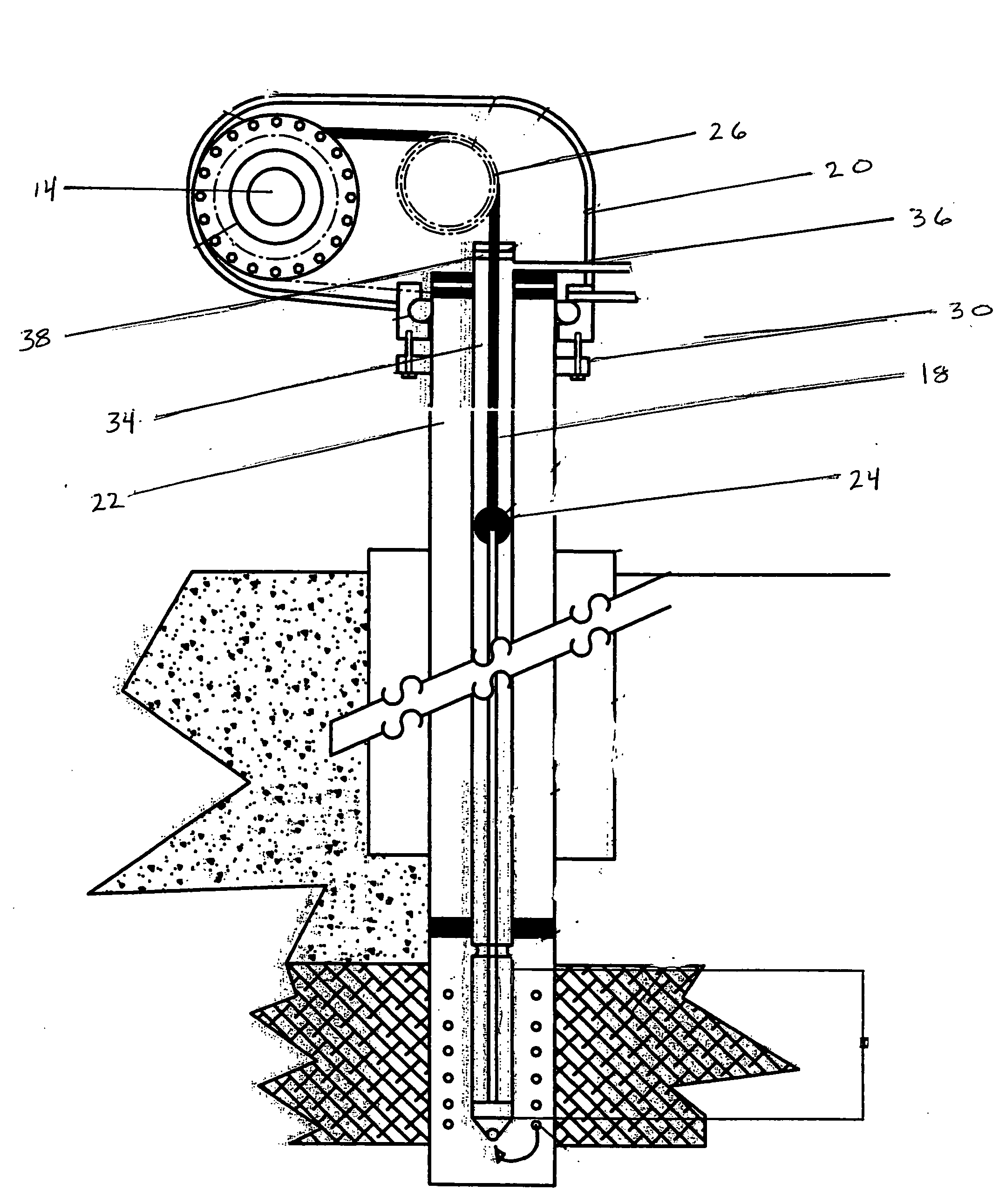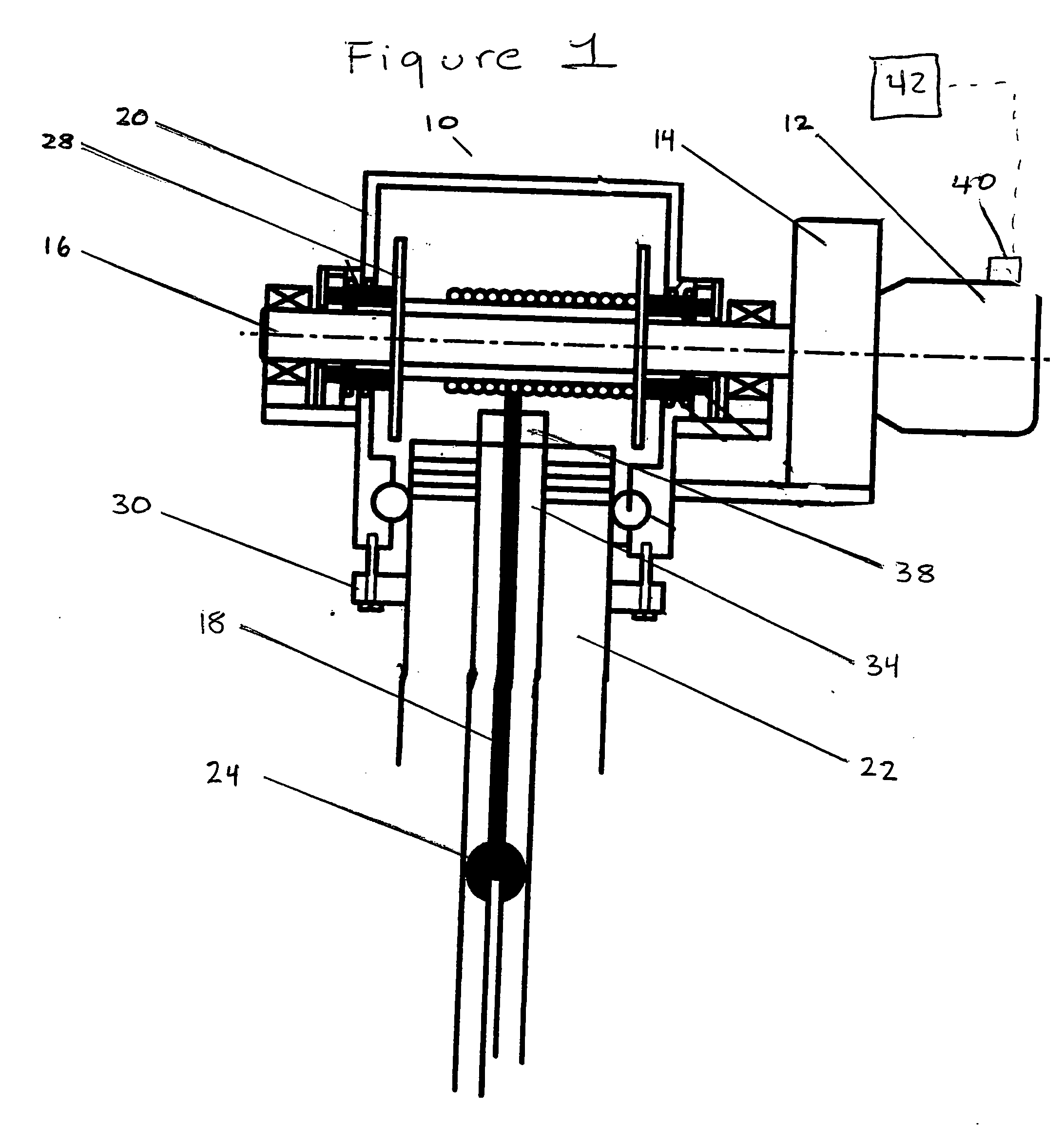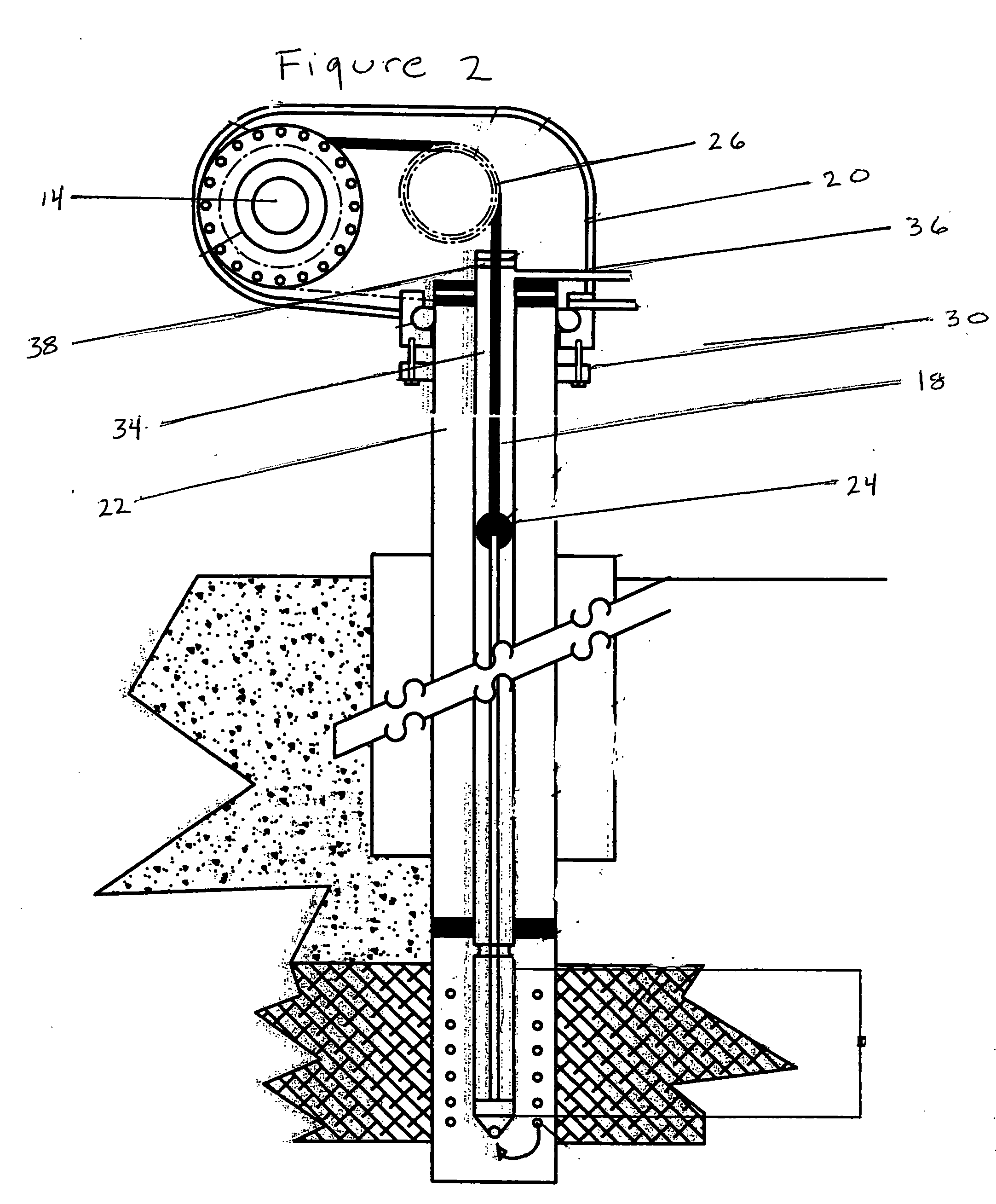Variably operable oil recovery system
a technology of oil recovery system and variable operating efficiency, which is applied in the direction of gearing, piston pumps, borehole/well accessories, etc., can solve the problems of fixed (and relatively limited) operating efficiency, unattractive mechanical efficiency, and inability to disclose a variably operable oil recovery system, etc., and achieves the effect of increasing torque, increasing efficiency, and extremely high mechanical efficiency of the present invention
- Summary
- Abstract
- Description
- Claims
- Application Information
AI Technical Summary
Benefits of technology
Problems solved by technology
Method used
Image
Examples
Embodiment Construction
[0028] Referring to FIG. 1, the system of the present invention is generally designated by the reference numeral 10. System 10 is thought to be most beneficial in the context of oil recovery, and as will be further discussed, is thought to be particularly beneficial for such in view of its advantages with respect to smaller size, mechanical efficiency, outstanding gear reduction and torque variation characteristics, and the ability withstand sheer or shock loads—all of which result from its novel configuration.
[0029] System 10 is characterized by drive member 12 in combination with torque variation member 14. In the preferred embodiment, drive member 12 is an electronically controlled member capable of variable operation. More specifically, drive member 12 may operate at different speeds and in different modes (i.e., forward mode and reverse mode). A variety of drive members may be sufficient, if not useful, in the present system. However, in the preferred embodiment, drive member ...
PUM
 Login to View More
Login to View More Abstract
Description
Claims
Application Information
 Login to View More
Login to View More - R&D
- Intellectual Property
- Life Sciences
- Materials
- Tech Scout
- Unparalleled Data Quality
- Higher Quality Content
- 60% Fewer Hallucinations
Browse by: Latest US Patents, China's latest patents, Technical Efficacy Thesaurus, Application Domain, Technology Topic, Popular Technical Reports.
© 2025 PatSnap. All rights reserved.Legal|Privacy policy|Modern Slavery Act Transparency Statement|Sitemap|About US| Contact US: help@patsnap.com



